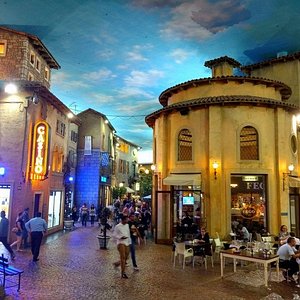Some Known Details About Johannesburg North Attractions
Some Known Details About Johannesburg North Attractions
Blog Article
Some Known Details About Johannesburg North Attractions
Table of ContentsThe Facts About Johannesburg North Attractions RevealedFascination About Johannesburg North AttractionsWhat Does Johannesburg North Attractions Mean?Some Known Incorrect Statements About Johannesburg North Attractions The Ultimate Guide To Johannesburg North AttractionsOur Johannesburg North Attractions Ideas
The city grew on the side of the Witwatersrand Main Reef, a below ground stratum of gold-bearing quartz-silica empire that arcs for hundreds of miles below the Highveld - Johannesburg North attractions. Most of the gold mines in the city discontinued procedure in the 1970s, however in its day the Witwatersrand gold sector accounted for more than 40 percent of the world's yearly gold production.Johannesburg has a warm climate. Summer temperatures average concerning 75 F (24 C); winter months temperatures average about 55 F (13 C) and just periodically dip listed below cold. The city delights in regarding 8 hours of sunlight daily in both winter months and summer season. Rain averages about 28 inches (700 millimetres) per year, yet the overall differs significantly from year to year.
What rain the city receives drops nearly solely in the summer season, often in stunning late-afternoon electrical storms. Air air pollution presents a significant trouble, especially in the winter season months, when thermal inversions hinder the westward circulation of air from the Indian Ocean. Pollution is most serious in the largely cleared up Black areas on the city's periphery, where lots of locals still count on coal for gas.

Johannesburg North Attractions Fundamentals Explained
The balance of the city is inhabited by whites. Accommodation varies in personality and top quality. Soweto is infamous for its limitless rows of municipally developed, two-room matchbox homes, yet it also has a few flourishing enclaves in addition to brimming squatter camps, where 10s of thousands live without water, electrical energy, or sanitation facilities.
Physical development, although rather limited by transport, continued promptly as immigration to South Africa, and Johannesburg specifically, boosted substantially. This issue was solved in the 1930s when the auto was introduced in mass manufacturing to South Africa. Cars were, for the most part, visit their website restricted to the well-off, and permitted them to relocate to the north of the city and commute into the centre.
Most bad residential areas were combined, with inadequate blacks and whites living together, although the affluent residential areas were usually scheduled for whites.
The number of individuals living in the internal city on an informal basis is unidentified, as many are unlawful immigrants. The joblessness, education and learning, and age accounts of the location are all unidentified, due to the trouble of obtaining trustworthy details about the location.
All about Johannesburg North Attractions
Yeoville and Bellevue have a mix of home buildings and single household units on little whole lots. The region is located on a hilly divide that runs from eastern to west. The most conspicuous geographical feature is Observatory Ridge, which is called for the big observatory situated on it. The recreational areas are no more used, because of security issues.

Unknown Facts About Johannesburg North Attractions
The eastern suburbs are some of the earliest locations of Johannesburg, there are large neighborhoods of Jewish and other European backgrounds, the majority of the population is English speaking. There are three golf programs as well as a number of safeguarded ridges with viewsites.
The location is primarily composed of old "matchbox" houses, or four-room houses built by the federal government, that were constructed to supply inexpensive holiday accommodation for black employees during racism. Soweto is an acronym, representing "South Western Townships". Road after street around is lined with matchboxes; nonetheless, there are a couple of smaller sized locations where prosperous Sowetans have constructed residences that are a lot more similar in stature with those in more wealthy suburban areas.
Hostels are one more noticeable physical function of Soweto. Originally developed to house male migrant workers, lots of next have actually been improved as houses for pairs and family members. The N1 Western Bypass skirts the eastern border of Soweto. The suburb was not traditionally allowed to create work centres within the area, so practically Clicking Here all of its homeowners are commuters to various other parts of the city.
Facts About Johannesburg North Attractions Uncovered
The domestic locations in the north residential areas are generally official, with no considerable locations of informal housing, or housing that lacks an irreversible framework. This is a well-known location, there is a trend of land usage modification from property to business, particularly along main arterial roadways and around established nodes.
The location is well linked to roadway networks, particularly along the north-south axis developed by the M1 and N1. Roadways to the eastern and west are much less well developed, as there are no freeways taking a trip in that direction. In the direction of the northern border of the city, the thickness of growth reduces, leaving huge locations of primitive land around Midrand.
Johannesburg North Attractions Fundamentals Explained
The first residential area to the north of the central city is Parktown, which lies on a hillside overlooking the central city and Hillbrow. It has lots of wealthy citizens and Edwardian-design manors, as well as the Education and Clinical schools of the University of the Witwatersrand. The huge concrete Charlotte Maxeke Johannesburg Academic Medical Facility dominates the skyline of Parktown.
Report this page